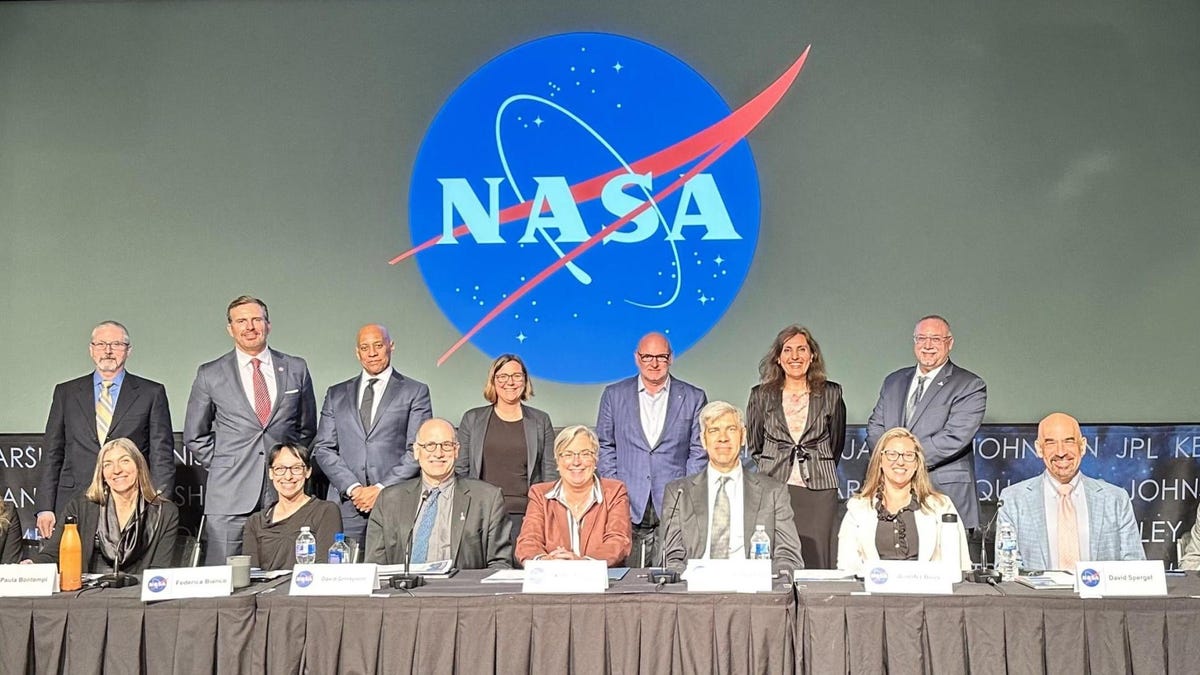
NASA wrapped up a year-long investigation into hundreds of sightings of Unidentified Anomalous Phenomena (UAP), and its independent study team released a 36-page report that was largely inconclusive. The space agency is not letting up, however, assigning a director of research into the unidentified phenomena and launching its own efforts into uncovering more events.
On Thursday, NASA held a press conference to announce the results of its study of UAP sightings (the term “UAP” has replaced the outdated “UFO”). This marks the “first time that NASA has taken concrete action to seriously look into UAP,” NASA Administrator Bill Nelson said during the press conference. “The top takeaway from this study is that there is a lot more to learn, the NASA independent study team did not find any evidence that UAP have an extraterrestrial origin but we don’t know what these UAP are.”
Advertisement
As a result, the space agency is officially throwing its hat in the ring. NASA announced the appointment of a director of UAP research to develop and oversee the agency’s work in not only analyzing sightings, but also using machine learning to search for anomalies in the skies. The agency named Mark McInerney for the position, who previously served as NASA’s liaison to the Department of Defense on issues related to UAP.
Dan Evans, assistant deputy associate administrator for research at NASA’s Science Mission Directorate, attempted to justify NASA’s involvement with UAP research. “First and foremost, it provides an opportunity for us to expand our understanding of the world around us,” Evans said during the conference. “At NASA, we are committed to charting the uncharted so this work aligns with who we are.” NASA initially did not name the director for fear that they would be harassed by UFO conspiracists.
Advertisement
Advertisement
“Secondly, this study aims to enhance situational awareness. The presence of UAP raises serious concerns about the safety of our skies,” he added. “Let’s not forget that the first A in NASA is aeronautics.”
NASA officials also emphasized that the space agency wants to transition the conversation around UAP from sensationalist conspiracy theory to actual science. “The current approach to UAP data collection has led to a limited sample of events and limited data, stigma has limited reporting by pilots, both civilian and military, so we know there’s missing data,” David Spergel, president of the Simons Foundation and chair of NASA’s UAP independent study team, said during the press conference. “For its analysis in other areas, NASA always takes a scientific approach of systematic data collection.”
Through its various missions and studies, NASA does search for signs of extraterrestrial life whether by having rovers probe rocks on Mars for ancient microbes or by scanning the cosmos for worlds that could be habitable. The space agency, however, is not claiming that UAP sightings are a sign of aliens, but it’s not saying that it’s not aliens either.
Advertisement
Nelson’s opening remarks were all about aliens and the search for life beyond Earth. “Do I believe there’s life in a universe that is so vast that it’s hard for me to comprehend how big it is?” he asked. “My personal answer is yes.” He then went on to highlight that the independent study team found no evidence that UAP have an extraterrestrial origin. In the end, it wasn’t clear whether NASA was into this whole UAP thing from an aeronautics safety perspective or as part of its hunt for life in the universe, or if it’s a combination of both.
The space agency hopes to move the conversation on UAP forward, but it’s not clear what exactly it contributes. NASA’s existing efforts into answering the question of whether or not we are alone in the universe are sufficient enough, and leaning into the ongoing hype around UAP isn’t going to contribute much to the space agency’s science-based search.
Advertisement
A year-long investigation found nothing, so it’s frustrating to hear that NASA wants to keep on going, and with a new director’s position to boot. What’s more, if this is some sort of terrestrial threat, there’s nothing that NASA can really do about it—it should then fall under the purview of the Department of Defence. And if—and this is a BIG if—these are actual aliens, then NASA already has programs dedicated to finding life beyond Earth.
Although NASA’s report on UAP did not reveal much, the space agency promised to be transparent in its approach to its own research on the phenomena. “There’s so much concern that there’s something locked up, classified, and that the American government is not being open,” Nelson said. “Well, we are the American government and we are open and we’re going to be open about this.”
Advertisement
“Let me tell you, NASA is not a place that’s going to hide its head in the sand,” he added.
Services Marketplace – Listings, Bookings & Reviews